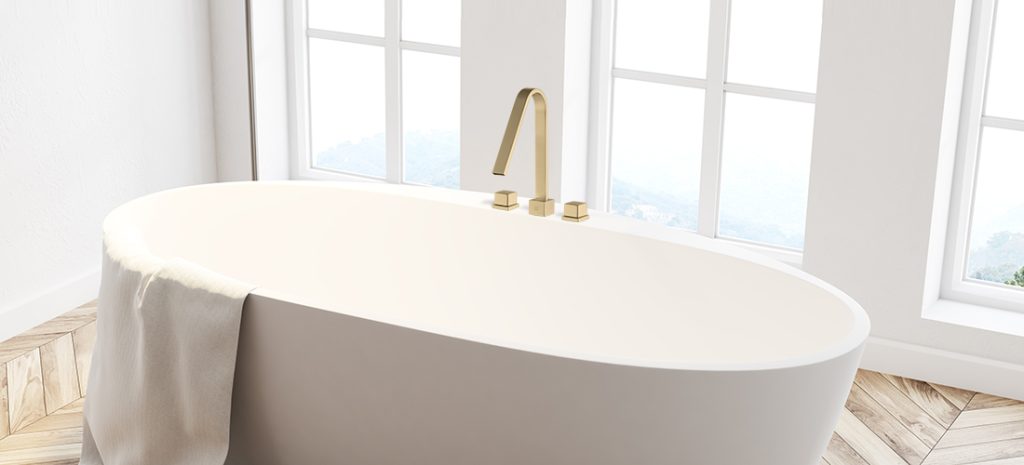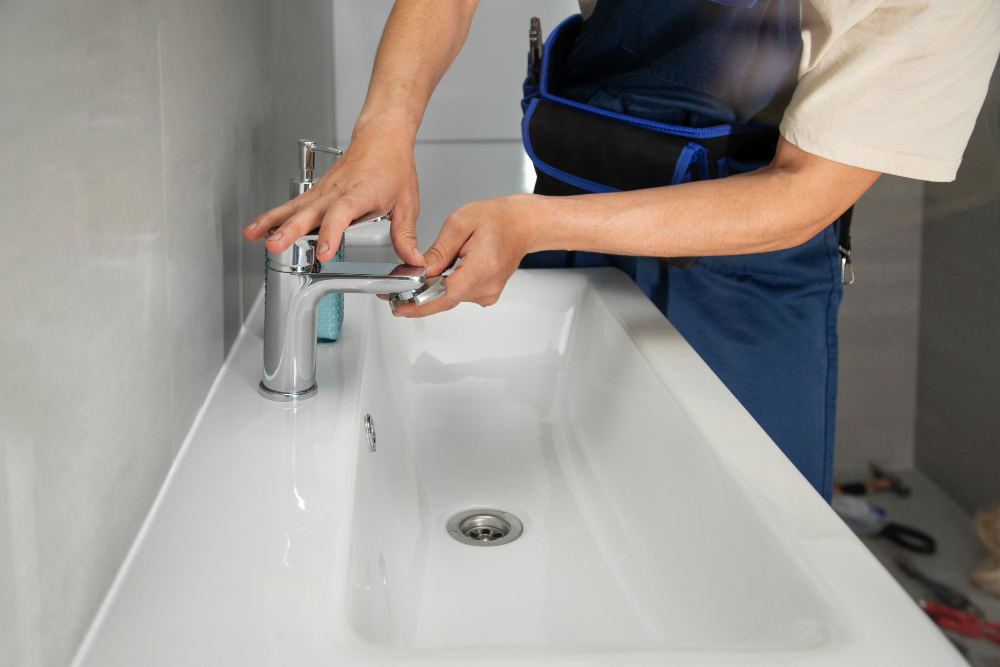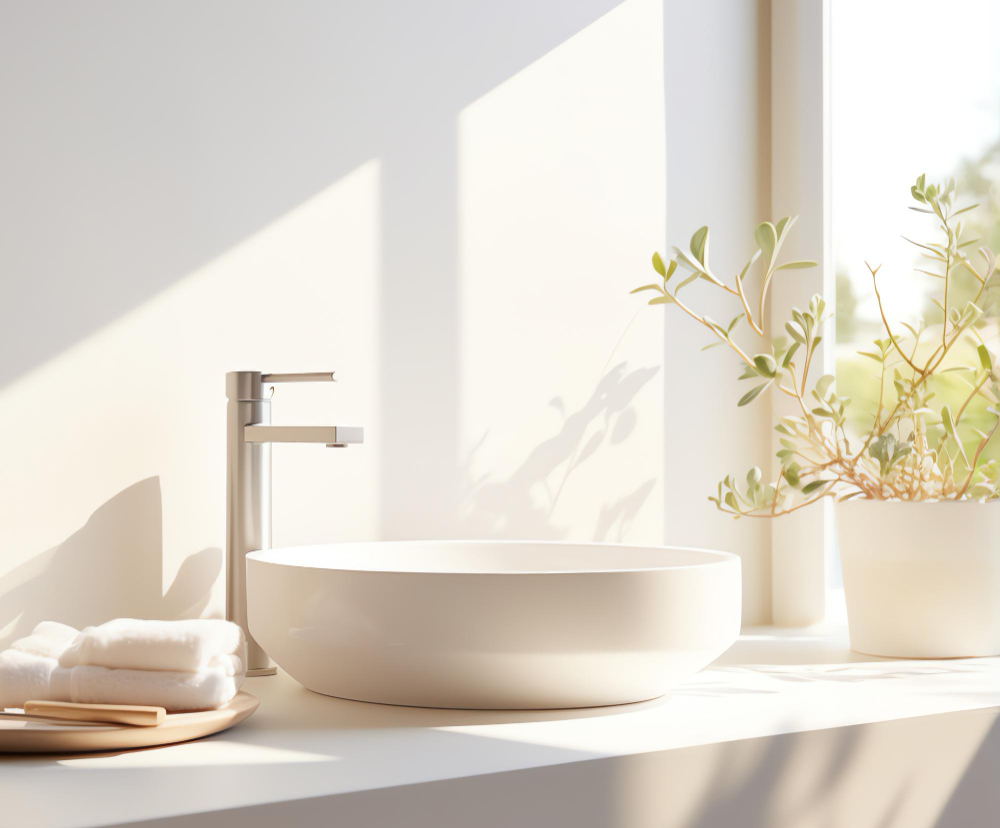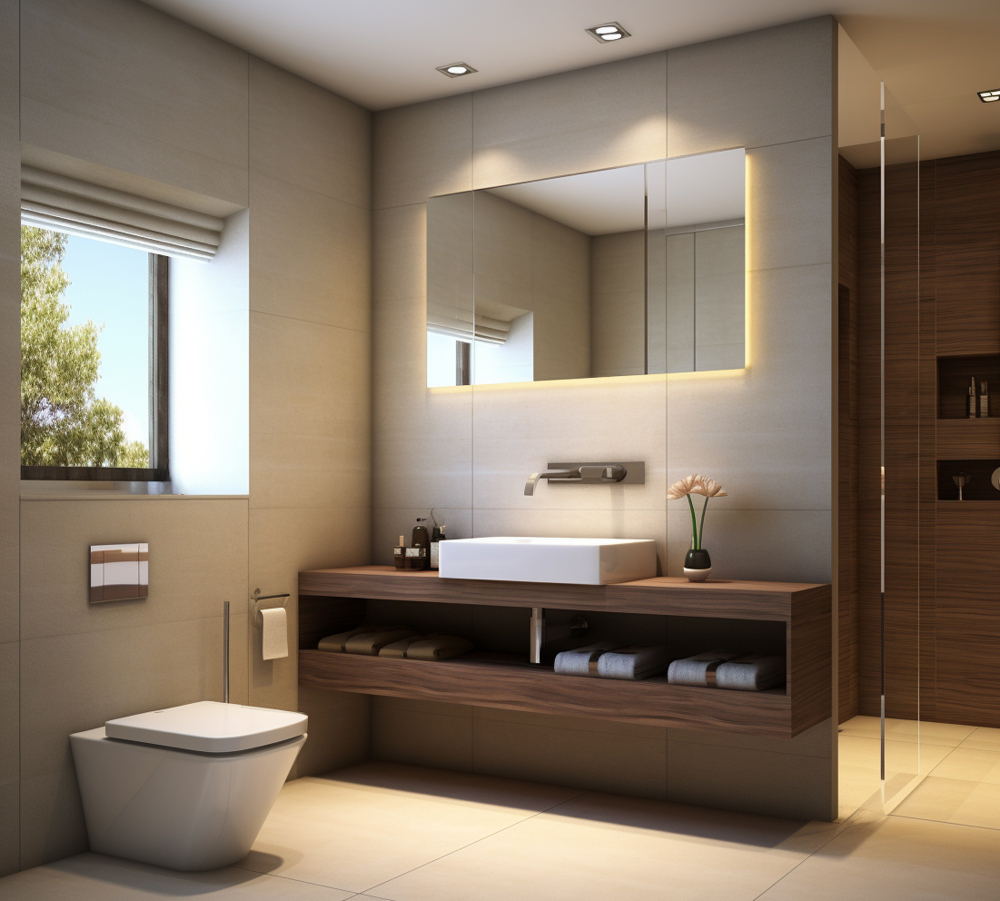
Ever wondered what a Roman tub faucet is and why it’s making waves in modern bathrooms?
In today’s article, we’ll unravel the elegance, functionality, and historical charm that define Roman tub faucets.
From their classical origins to contemporary designs, join us on a journey to discover the allure and unique features that make Roman tub faucets a standout choice for homeowners.
Table of Contents
ToggleWhat to Know About Roman Bathroom Faucets
Roman bathroom faucets, crafted for Roman-style bathtubs, boast timeless elegance. Highlighting key aspects:
Design
Features a classic look with options like single or dual handles and a high arc spout for a traditional touch.
Materials
Crafted from durable materials like brass, stainless steel, or zinc. Brass faucets are favored for their corrosion resistance.
Finishes
Available in diverse finishes—matte black, brushed brass, bronze, nickel, and chrome—providing versatility in style.
Functionality
Some models offer extra features, such as handheld showers, enhancing their overall functionality.
Installation
Designed for easy deck installation on tubs, making them a popular and accessible choice for various bathrooms.
Certification
Certain Roman faucets may carry UPC or cUPC certification, ensuring adherence to safety, efficiency, and environmental standards.
Types of Installation for Roman Bathtub Faucets
Roman bathtub faucets offer three primary installation types: deck-mounted, wall-mounted, and freestanding.
Deck-mounted Roman Bath Faucets
These faucets are installed on a flat surface—either pre-drilled holes on the tub or its surrounding deck. Suited for holes ranging from 7″ to 8″, they are a popular choice, providing a classic appearance.
Wall-mounted Roman Bath Faucets
Installed on pre-drilled holes in the bathroom wall, these faucets attach to the top deck of the tub. Reminiscent of ancient Roman baths, they offer a distinctive touch.
Freestanding Roman Bath Faucets
These faucets stand independently, not attached to the tub or wall. Mounted on the floor near the tub, they deliver a unique and elegant aesthetic.
These varied installation types empower homeowners with options to align with their preferences and complement their bathroom design.
Benefits of Using Roman Bathroom Faucets
Roman bathroom faucets have several advantages, including the following:
Elegant Design: Infusing a bathroom with a classic, traditional design, Roman faucets bestow an air of elegance.
Versatility: Available in a spectrum of materials, finishes, and styles, Roman faucets offer versatility, catering to diverse bathroom preferences.
Functionality: Certain Roman faucets go beyond the basics, incorporating features like handheld showers, elevating their functional appeal.
Easy Installation: Engineered for simplicity, Roman faucets facilitate easy deck installation on tubs, establishing them as a preferred choice for many bathrooms.
Increased Home Value: By adding a touch of luxury and sophistication, Roman bathroom faucets contribute to heightened home value—a wise investment for homeowners.
Roman Tub Faucet: FAQs
Is a Roman tub faucet the same as a garden tub faucet?
The key contrast between a Roman tub faucet and a garden tub faucet lies in the length of the spout.
Roman tub faucets boast a longer faucet head compared to their garden tub counterparts, usually extending at least 1 inch more on average.
Despite their similar appearances, it’s the spout length that sets these two faucet types apart.
Can I replace just the Roman tub faucet?
You can swap out just the Roman tub faucet. It’s a simpler task compared to installing a completely new one since the new faucet screws onto the existing mounting hardware.
The replacement process involves basic hand tools like a hex key, screwdriver, channel locks, and a putty knife.
Crucially, when purchasing, opt for the faucet “trim” rather than the “valve” to ensure compatibility with the existing valve.
Can I change my Roman tub trim?
Certainly, you can update your Roman tub trim. To achieve this, ensure the new trim aligns with your current valve. Follow these steps:
Step 1: Determine compatibility
Check if the new trim matches your existing valve. Some manufacturers provide compatibility guides, like Moen, assisting in verifying if your current valve suits their latest trim styles.
Step 2: Remove the old trim
Turn off the water supply, unscrew the handles, and detach the old trim, including handles and spout, from the valve body.
Step 3: Install the new trim
Affix the new trim to the valve body. This may involve attaching handles and spout to the valve body or using a new valve body if the existing one isn’t compatible.
Step 4: Reconnect the water supply
Switch the water supply back on and test the faucet to ensure proper functionality.
Remember, ensuring compatibility between the new trim and your existing valve is crucial.
If the spout shank measures under 1 ⅜”, new spouts may not fit. It’s best to check with a professional or the product manufacturer first.
What is the flow rate of a Roman tub faucet?
The amount of water coming out of a Roman tub faucet, known as the flow rate, differs based on the model and brand.
For instance, the Moen T913BN Roman Tub Faucet Trim has a flow rate of 18 gallons per minute (gpm).
In contrast, other Roman tub faucets might have a lower flow rate, like 2.4 gpm or 2.5 gpm.
It’s crucial to review the specifications of the specific Roman tub faucet you’re considering to find out its exact flow rate.
Key Takeaway
Roman bathroom faucets blend timeless design, material versatility, and potential extra features, making them a preferred choice for stylish and functional bathrooms.
To sum it all up, Roman bathroom faucets stand out for their design, versatility, functionality, easy installation, and the potential to enhance home value.
Select certified options and reliable Roman bathtub faucet manufacturers for added assurance of quality and safety.


